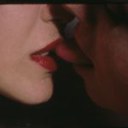0208 Julião Sarmento
The Photographic as Perversion
Identifiers (Article)
Identifiers (Files)
Abstract
Instead of stabilising the poles of stasis and non-stasis, and narrative and non-narrative, in the 1970s, Julião Sarmento plays within a concomitant scheme: photography and painting, photography and film, stasis and narrative are merged. What is at stake is the possibility of challenging the modernist tenets of photography canonically defined in opposition to painting and cinema. The perversity is not only in the content of some works but also in the very logic underlying the approach to the medium in Sarmento's œuvre, whether through a perversion of the boundaries between the media or by the assertion of the medium itself as perversion. This paper presents a case study that reflects upon the replacement of a structural and negative system with an unsystematic difference (in the sense less of expansion than of the medium's deconstruction). New dimensions concerning the issues of contamination and hybridisation in contemporary art are also brought into play.
Statistics


License

This work is licensed under a Creative Commons Attribution-NonCommercial-NoDerivatives 4.0 International License.



